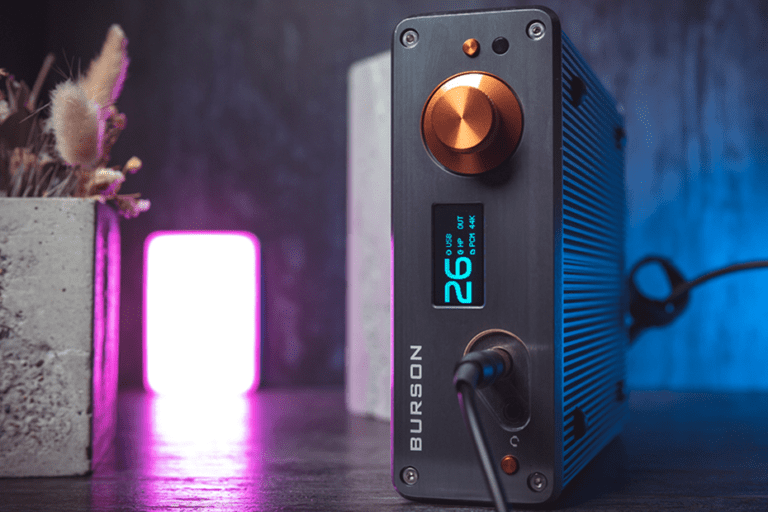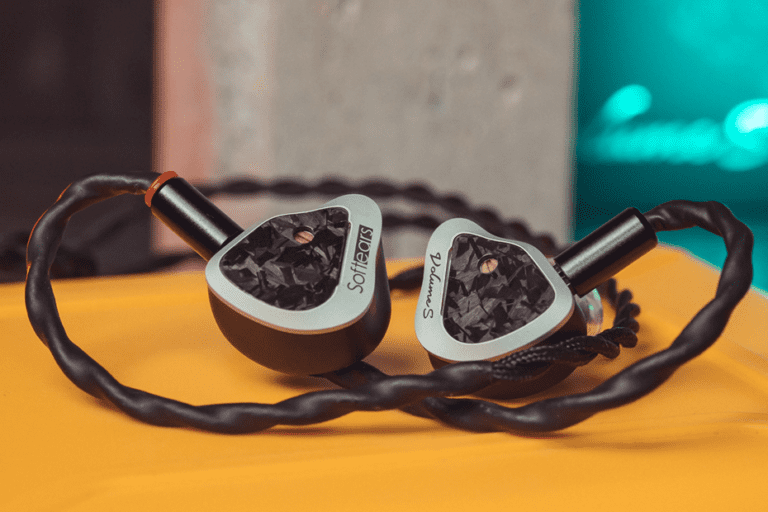
Softears Volume S in-ear monitors review 2025
Today, we’re taking a closer look at the impressive Softears Volume S in-ear monitors. I have heard many interesting things it and I’m excited to have it on my desk today. Many thanks to the Softears team for making this possible!
In the box
Softears Volume S comes in a large beautiful box with the illustration of the IEM on the front of the box and frequency response graph along the list of technical specifications on the back.
Inside the box we have Volume S in-ear monitors, leather case, two sets of silicone ear tips, a modular cable with 3.5mm and 4.4mm interconnects, a tiny screwdriver to change the IEM impedance, a microfiber cloth, a fabric pouch, metal card with a serial number, QC card, information leaflet and a user manual. And that’s quite a lot of accessories!
Design & build
The shells of Softears Volume S are average in size and are made out of two parts – the soft touch medical grade resin and aluminum face plate with carbon fiber insert. There is a model name engraved on the left face plate and the company name of the right face plate.
To a naked eye it might look like there is a gap in between the lower part of the carbon fiber insert and the rest of the aluminum face plate, but this is intentional, as this is actually a vent. On both carbon inserts we also have a tiny potentiometer that changes the IEM impedance and we will get into this later in this review.
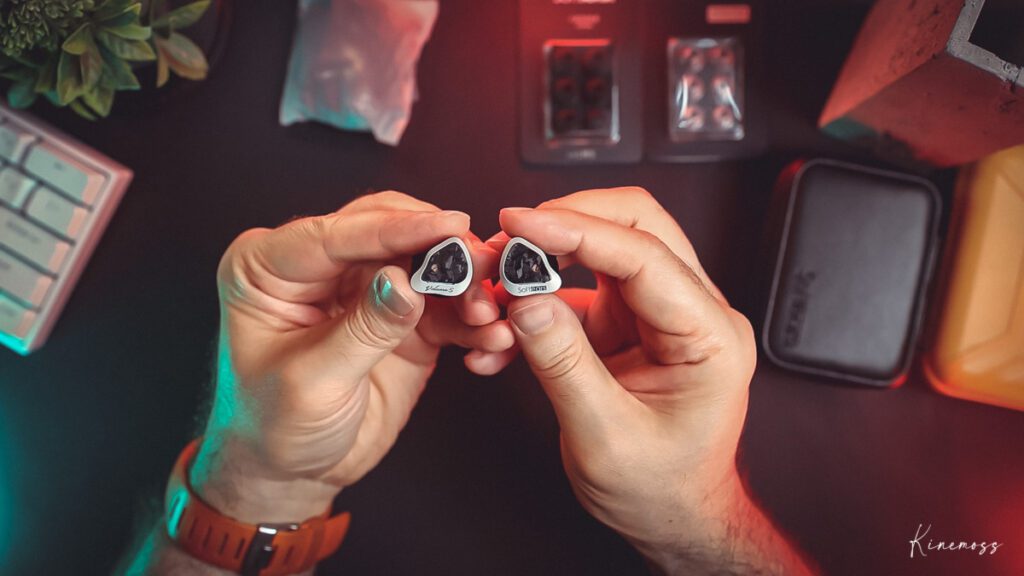
The nozzle diameter is 5.5mm, the nozzles are on a longer side and there are 3 sound bores at the end of the nozzle. There is neither lip at the end of the nozzle nor a metal mesh to protect the bores so I advise you to regularly inspect and clean the ear tips. The 2-pin connectors are located on top of the IEM. They are recessed, making the connection safe and secure.
Cable
The Softears Volume S comes with a fabric braided modular 2-pin cable that is 1.2 meters long. There are 2-pin connectors on one side and the modular connector on the other. The cable has a metal splitter, plastic chinch slider and comes with two interchangeable terminations, the 3.5mm and 4.4mm balanced. I’m not a big fan of paracord wrapped cables and from my experience they are microphonic, which is also the case with the cable on Softears Volume S.
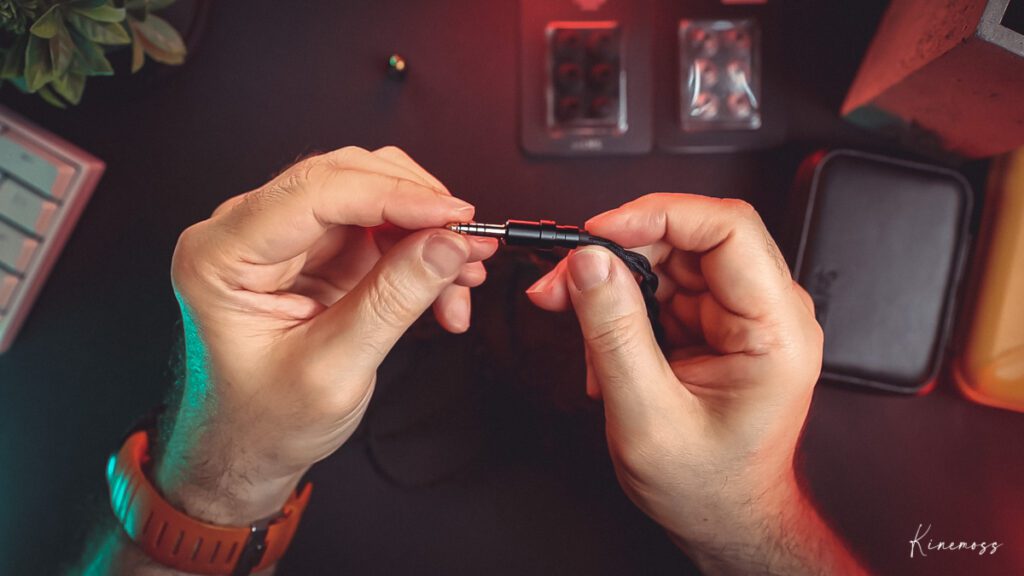
On the other hand modularity adds a lot of flexibility, the channel indication on 2-pin connectors are printed on the inside part of the connector and that’s a clever idea if you ask me, as it makes the IEM look more discreet when the cable is connected).
Fit & comfort
This is where Softears Volume S shines. It is one of the most if not the most comfortable universal IEM that I have ever tried. For me everything with this IEM is perfect – the shape of the shell, the soft plastic, the nozzle length, nozzle diameter and the weight distribution.
The included ear tips are good too, and I had no reason to do tips rolling which is quite a rare case. So all my tests have been performed with the stock ear tips.
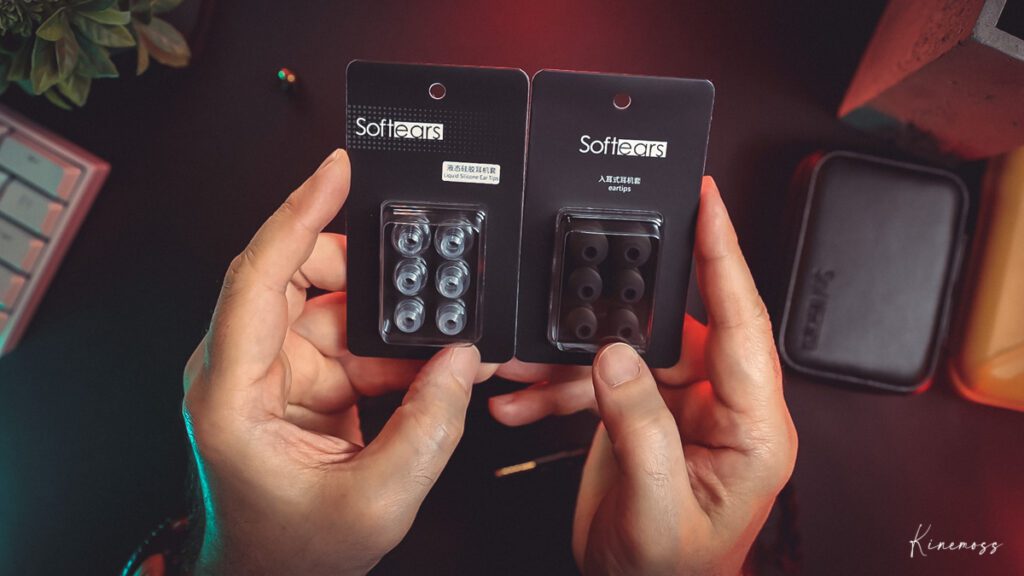
I didn’t experience any discomfort or fatigue during long listening sessions, so in this department it is 10 out 10 for me. But as fit & comfort is very subjective, take all I just said with a grain of salt.
Technical specifications
The Softears Volume S is based on 1 x 10mm dynamic driver, 1 x 6mm passive dynamic driver (or passive radiator if you will) and two balanced armatures (one of which is responsible for midrange, another one – for the treble). The IEM also has the low-latency conduit technology implemented which means using the shortest possible audio tube length to reduce the sound travel distance. And the Volume S is also it’s using a so-called bus impedance technology which alters the overall IEM response rather than altering specific frequencies.
Volume S has two tuning modes (which Softears calls Pop and Classical) and the modes can be switched using the potentiometers located on the IEM face plates. The adjustment tools, which are tiny screwdrivers, are also included in the package.
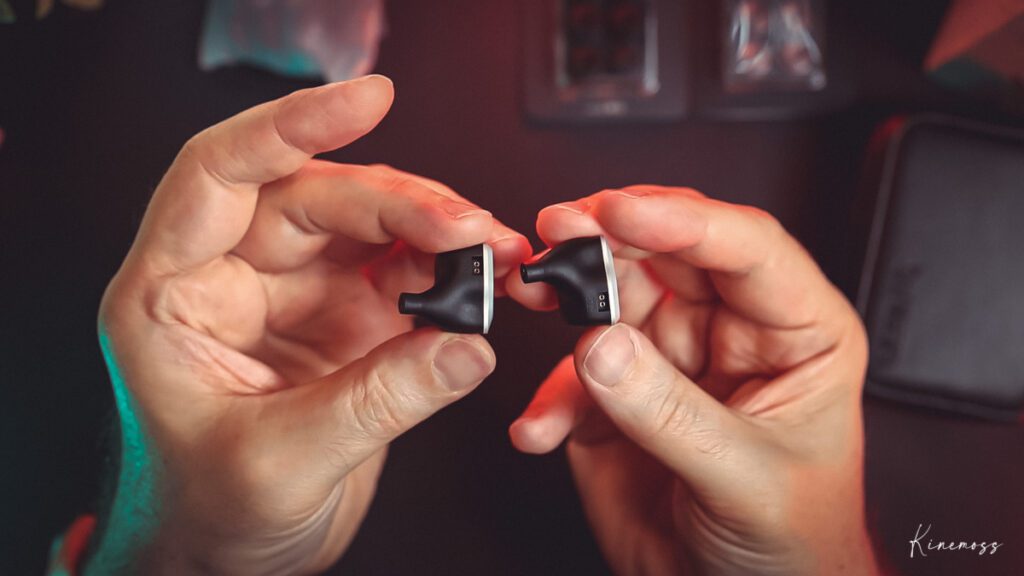
In the low impedance mode, the impedance is 9.8 Ohms, the sensitivity is 124db. In high impedance mode the impedance increases to 31.2 Ohms and the sensitivity decreases to 114db.
You can easily drive Volume S with the majority of sources in both modes, but I would mention that using a source with a low output impedance will benefit Volume S. In addition, the IEM scales really well with a proper source.
Softears Volume S sound impressions
Before we talk about the sound, please note that all sound impressions in my reviews are completely subjective. You should take them with a grain of salt.
Low impedance mode
I have spent 3 weeks with this IEM and I did my tests both in the low and high impedance modes. So let’s talk about low impedance mode first.
In this mode the Softears Volume S is bold, rich and its tonality has blown me away. The IEM is dynamic, coherent and sounds very engaging.
The bass is full, well controlled, has a great extension, a good impact and punch. Moreover, the bass details are just phenomenal and I was able to distinguish the notes even in busy musical pieces which was impressive.I wouldn’t call it a bass heavy IEM, but both sub-bass and mid-bass are well pronounced and this worked especially well for my current music library. In addition the bass is fast and tactile, the notes are clearly outlined and in my opinion the bass performance is exemplary.
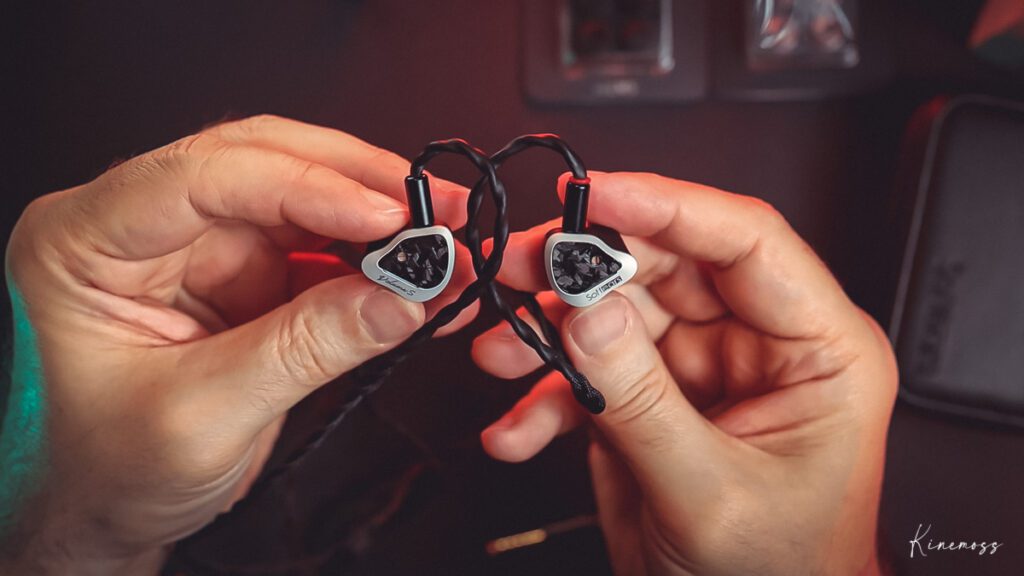
The midrange is full and lush and there is a bass bleed into midrange, but it surprisingly works in favor of midrange presentation. So let me explain. On many IEMs the bass bleed is considered a negative thing, as it pushes out the clarity and definition of the lower midrange. But it’s not the case with Softears Volume S, as lower midrange here displays a fantastic full character that contributes to the overall midrange definition. Vocals and instruments sound great, and the midrange timbre is good. The upper midrange is not as hot as on some other IEM. Still the upper midrange displays a great balance between energy and solid presentation, and it has never been harsh or grainy in my case.
The treble is interesting as well. It’s well extended, but slightly soft and rounded, which makes not so well recorded music sound slightly more coherent and well-glued together. With a well recorded music, the treble really shines and it maintains a good balance between clarity, detail retrieval and definition. Softears Volume S is not a detail-monster, but its treble still has quite a lot of air and sparkle not to be considered veiled or recessed. Such treble response perfectly corresponds to the overall IEM tuning and it sits well in the mix.
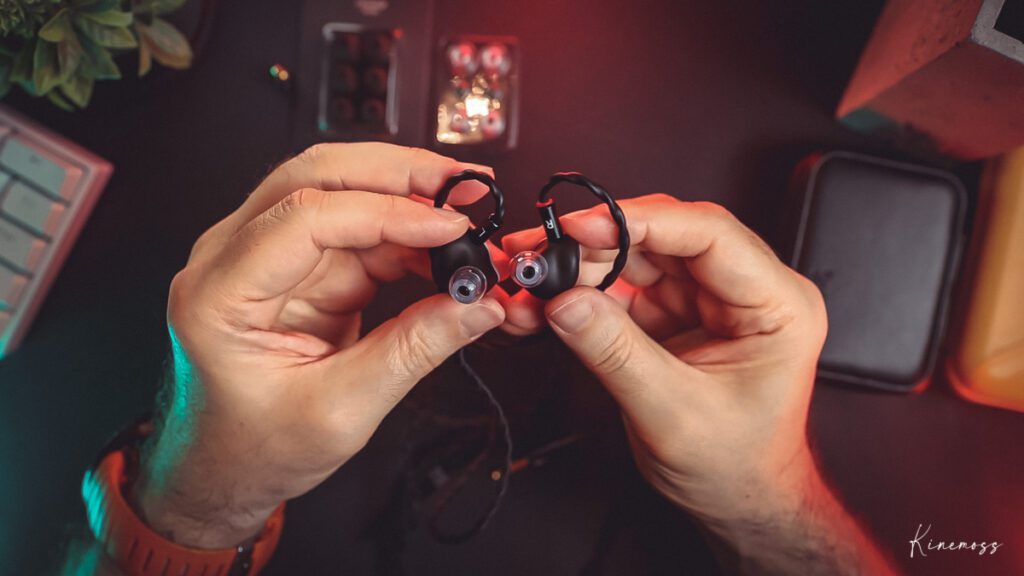
The soundstage is surprisingly wide, with a good spacing between instruments so recordings with well-designed sound landscapes sound breathtaking. The sound stage is also deep which helps a lot with layering and instrument separation, both of which are great. So in this regard this IEM leaves a lot of competition behind and I’m giving it 10/10 in this aspect.
Softears Volume S also performs exceptionally well in competitive games, where sound clarity and a strong sense of distance and direction are crucial and it really gives you the competitive advantage.
High impedance mode
The high impedance mode changes the tuning drastically. The bass becomes less prominent, but still maintains a good level of detail. The lower midrange is partially losing its thickness and lush character while the upper midrange becomes more upfront and hot. The treble gains more energy which results in a more sparkly and open treble presentation.
Based on my tests, when switched to high impedance mode, the Volume S become much less forgiving. Also high impedance mode tuning is not as universal as low impedance mode tuning so it will suit some genres much better than others. Myself I had a positive experience with orchestral soundtracks, classical and contemporary classical music, while for example experience with rock & metal music in high impedance mode was a mixed-bag.
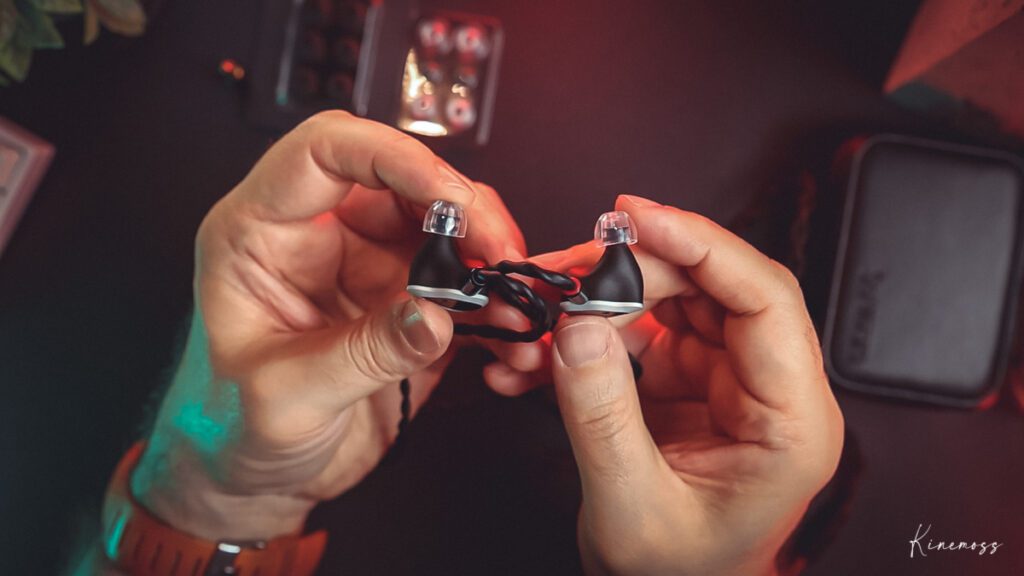
Also, in high impedance mode, you are getting a lot of energy in the upper midrange and lower treble so it can be borderline sibilant for some. As an example the string instruments become so sharp, you are literally feeling the bow hitting the strings. Such a sensation is clearly not for “delicate ears”, but if you can tolerate sensations like this – it’s a very interesting experience.
Overall, I think adding the second tuning was a great decision. While it’s not exactly a groundbreaking idea, I really appreciate that Softears is open to experimenting with different options. Giving listeners the chance to choose between two sound profiles adds a lot of flexibility and makes the experience more personal.
Conclusions
I was pleasantly surprised by Softears Volume S tuning and performance and I can see it easily become my daily driver. Its coherency, full-bodied presentation, great tonality and fantastic fit is an ideal choice for both casual listening and more detailed and analytical sessions.
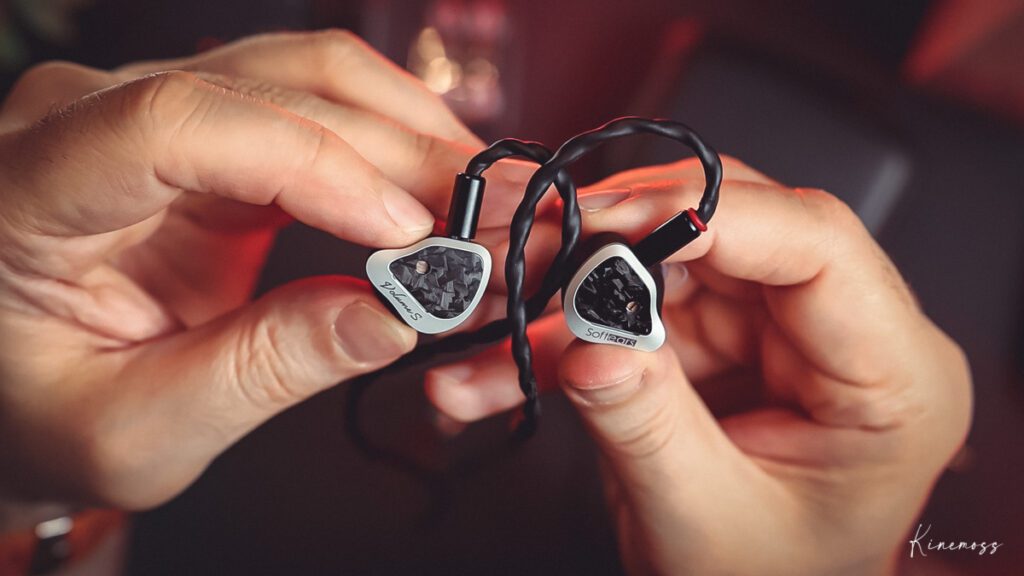
Pros:
- Excellent design, build and choice of materials
- The fit & comfort is fantastic
- Two tuning modes
- Great set of accessories
- Lively and full sound presentation in low impedance mode
- Great bass response with phenomenal details
- Lush and full midrange
- Rounded treble with good level of details
- Fantastic soundstage width and depth
- And a very nice carrying case
Cons:
I just couldn’t find any flaws with this IEM, at least not for me. But if you want me to nit-pick, I will mention that I’m not a big fan of paracord cables, so I’d prefer to have a different cable. Another thing I’d mention is that the high impedance mode is not as versatile as I expected it to be. But that’s a mere nothing.
The Softears Volume S truly excels with well-recorded music, thanks to its coherent driver configuration and driver implementation. However, at $319, it is still a considerable investment, so I recommend testing it first to ensure it meets your preferences before making a purchase. That said, I can easily recommend it, as it stands out as one of the best-sounding IEM in its price bracket.
And that concludes my review for today. If you want to see more content like this, consider subscribing to my YouTube channel. Thank you for joining me, and until next time, goodbye!



